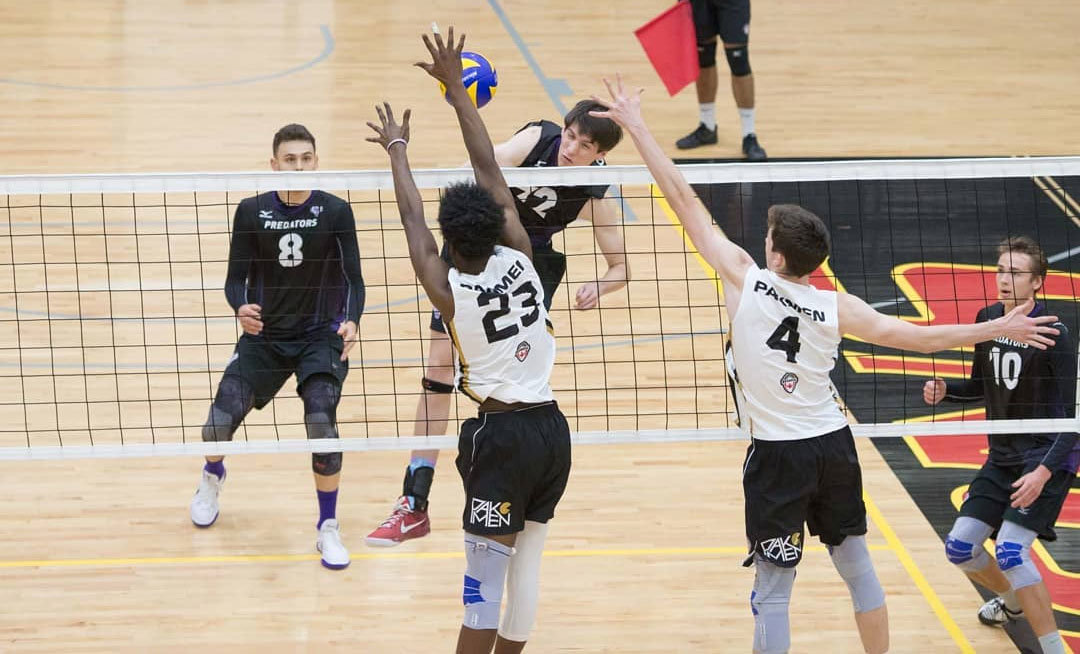The Bedrock of Volleyball

By Shayaan Aziz and Kaushik Chatterjee
Research Staff
Pakmen Volleyball Club
Volleyball is a sport beloved by millions. Played globally, it is the 5th most popular sport in 2017. It is one of the most competitive games one can play, and requires tenacity, audacity, and unity. In order to achieve success in volleyball, one must master the skills required: Serving; passing (underhand); attacking (spiking, tipping, etc.); blocking.To achieve mastery in volleyball, you must first grasp these skills. Here, we shall explain clearly and concisely what these skills are and how to perfect them. Skills are the bedrock of volleyball.
Let us begin with serving. Serving is possibly the most important skill, as it initiates a rally and is one of the valuable opportunities to gain a free point. Serves are used to put the ball in play; having a good serve ensures your team starts with an upper-hand. There are two ways to serve: underhand and overhand. Underhand serving is the easiest to learn and master of the two, so we shall start with that. To serve underhand, ensure the ball is at waist height (a little higher is fine). Hold the ball in your non-dominant hand, while your dominant hand makes a fist (thumb should be on top). Drop the ball in front, step forward with non-dominant leg , and swing your dominant hand upwards, making contact with the underside of the ball (6 o’clock-to-12 o’clock). An overhead serve is slightly more elaborate. You should be sideways before you serve. Hold the ball in your non-dominant hand, poised to toss it up; your hitting hand should be behind your head at a 90º angle. Swing your arm up, tossing the ball at shoulder height. Swing your hand up and meet the ball at full extension, hitting slightly below the center. There should be minimal follow through to achieve a nice floater. The overhead will require more effort to perfect the timing. Try to toss it at just the right height (~1.5 × height; this provides a satisfactory amount of time to get into the correct position to strike the ball dead on).Here are some common errors and their corrections:
- Can’t serve ball over net (underhand): Move closer to the net and toss the ball over the net (underhand), forming a nice arc. Progressively move back. When you feel confident, add the serve motion.
- Ball goes into net (underhand): Your step may be too long, or too short, and/or the toss may be too low or too far in front of you. To correct this, adjust your stance and/or your toss position.
- Ball is served out: Reduce your follow through, and the ball toss needs to be closer to your body. If you find the ball continues to go out, ensure you’re hitting through the ball, and not under.
- Ball spins instead of floats: Make sure contact is in the center of the ball, with no wrist snap. Toss the ball in front (not above or behind).
You’ve learnt how to get the ball in play. But how do you pass? Without mastering the art of passing, your team will be in shambles. Here we will introduce the concept of passing with the ‘underhand’ technique. The underhand is the most common type of pass, and using it correctly results in an aggressive attack. Make sure your team is correctly positioned, and your target is facing towards you in ready position. You are now ready to pass! First, bring your wrists together from ready position and interlock your fingers. Your arms should be straight, and pointed slightly downwards (~45˚). Your knees must be bent slightly and your feet must be parallel to each other. As the ball come towards you, extend your knees (Do not swing your arms!) and make contact with the ball. Point your arms towards the target; there should be no additional follow through. Common errors and their corrections include:
- Ball does not reach target: Get closer to the ball, and utilise more of your legs.
- Ball does not reach a copacetic height: Ensure arms are pointed away from your body and arms and legs should be coordinated.
The ball is now in play, and your team has artfully played it. It is time to ignite an attack. Attacking is the only way to win points and, thus, the only way to win games. There is a myriad of attacking options. An attacking player must be able to: hit shots off the block , a variety of sets, offspeed shots, and tipping. Spiking, however, is the most vital and commonly used skill; a proper spike can unleash a devastating attack which will almost guarantee your team a point. Spiking stems from the service motion, so it will not be too difficult a skill to master. To spike, first jump up and point your non-dominant hand towards the ball, and your dominant arm back – much like the overhead serve. As you see the ball drop, continue bringing your dominant arm forward, while letting your other arm drop. When the ball is just above your head, swing your dominant arm in a circular motion, making contact with the top of the ball. Remember to snap your wrist to get the required topspin. Follow through, and land safely – remember: it’s a high jump, not a long jump. Common errors subsume:
- Ball goes into net: the ball is dropping too low before contact; ball may also be too far in front of you or contact is too much on top of the ball. To correct, hit the ball higher. And wait for the ball before hitting it.
- Ball goes out: Hitting under the ball and not having enough wrist-snap. Ensure that you make contact in the center of the ball, and snap your wrist after.
- Ball is hit wide: The elbow drops too much, or with an incorrect follow through. Watch your arms at contact; make sure you’re doing the motion correctly.
You’ve now acquired the fundamental skills to grow into an exceptional volleyball player. The only thing left is defensive skills; in particular, blocking. Blocking is an indispensable skill, as it dissipates an attack from the opposing team. A block is when an athlete is close to the net, and quickly shifts into position and puts their hands up to prevent the ball crossing the net. To block, simply focus on the ball and jump up, arms raised. Your hands should be close together with your fingers open, and wrists in parallel with your hands slightly in front. If you are able to, reach over the net to deflect the ball downwards. Blocking can also be used offensively, used to counter a defensive block from the opposing team. Here are some general mistakes made whilst blocking:
- Ball deflects out of the court: Position your hands inside the court
- Ball comes down in front of player: Bring your arms closer together and jump earlier.
You have learnt the most vital skills of volleyball. You have become a complete player who can serve, defend, and unleash cataclysmic attacks. Using these skills you can showcase your ability in a proper game. We bid you good luck on your quest to success in volleyball.
Check PAKMEN’s High Performance Volleyball programs |
Check PAKMEN’s Beach Volleyball programs |
